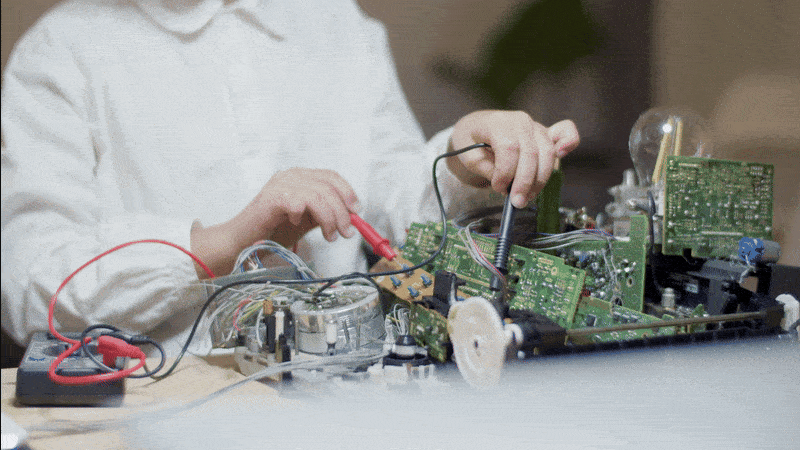Embarking on the journey of physical design in VLSI (Very-Large-Scale Integration) can be both exciting and challenging. As students delve into this intricate field, they often encounter various hurdles that can impede their progress. Recognizing these common pitfalls and understanding how to avoid them is crucial for mastering the discipline. This blog explores prevalent mistakes students make when learning physical design and offers actionable strategies to overcome them.
Neglecting Pre-Placement Sanity Checks
One of the foundational steps in physical design is ensuring that the design is ready for placement. Skipping or overlooking pre-placement sanity checks can lead to significant issues down the line.
Common Oversights
- Floating Pins: Unconnected pins in the netlist can cause functionality problems.
- Unconstrained Pins: Pins lacking proper constraints can result in incorrect behavior.
- Undriven Input Ports: Inputs without drivers can lead to undefined logic states.
- Unloaded Output Ports: Outputs without loads can cause excessive driving strength.
- Pin Direction Mismatches: Incorrect pin directions can disrupt signal flow.
How to Avoid Errors in VLSI Physical Design
- Conduct Thorough Checks: Regularly perform pre-placement sanity checks to identify and rectify issues early.
- Utilize Automation: Leverage scripts and tools to automate the checking process, reducing human error.
- Collaborate with Peers: Discuss findings with peers or mentors to gain different perspectives and solutions.
Overlooking Design Rule Violations
Design Rule Checking (DRC) is a critical step in ensuring that the layout adheres to manufacturing constraints. Ignoring DRC violations can lead to costly fabrication errors.
Common Mistakes
- Ignoring Minimum Width and Spacing Rules: These are fundamental to ensure manufacturability.
- Overlooking Antenna Effects: Failing to check for antenna effects can cause signal integrity issues.
- Disregarding Enclosure Rules: Inadequate enclosure can lead to electrical shorts or opens.
Best Practices for Physical Design Students
- Regular DRC Runs: Integrate DRC checks into the design flow to catch violations promptly.
- Understand Rule Decks: Familiarize yourself with the specific design rules for the target process node.
- Analyze DRC Reports: Carefully review DRC reports to understand the nature and location of violations.
Underestimating the Importance of Timing Closure
Achieving timing closure is often one of the most challenging aspects of physical design. Students may underestimate its complexity, leading to delays and performance issues.
Common Challenges
- Ignoring Setup and Hold Violations: Overlooking timing violations can lead to functional errors.
- Inadequate Clock Tree Synthesis (CTS): Poor CTS can cause clock skew and timing failures.
- Suboptimal Placement: Inefficient placement can increase wirelength and delay.
Tips for Mastering Physical Design in VLSI
- Prioritize Timing Analysis: Regularly perform static timing analysis to identify and address violations.
- Optimize Placement: Use advanced placement techniques to minimize delay and congestion.
- Refine CTS: Fine-tune the clock tree to ensure balanced clock distribution.
Skipping Post-Route Verification
After completing the routing phase, it's essential to verify the design to ensure that all constraints are met and that no new issues have been introduced.
Common Oversights
- Ignoring Post-Route DRC: Failing to perform DRC after routing can result in undetected violations.
- Overlooking Post-Route Timing Analysis: Not checking timing after routing can lead to performance degradation.
- Neglecting Power Analysis: Unchecked power distribution can cause reliability issues.
Best Practices for Physical Design Students
- Perform Comprehensive Checks: Conduct DRC, timing analysis, and power analysis after routing.
- Use Sign-Off Tools: Employ industry-standard sign-off tools to ensure design integrity.
- Iterate as Needed: Be prepared to make adjustments and rerun analyses to achieve optimal results.
Lack of Understanding of Design for Manufacturability (DFM)
Design for Manufacturability involves creating designs that are easy to manufacture and have high yield. A lack of understanding in this area can lead to designs that are difficult or costly to produce.
Common Mistakes
- Ignoring DFM Guidelines: Overlooking manufacturability guidelines can result in unyielding designs.
- Not Considering Process Variations: Failing to account for process variations can lead to reliability issues.
- Neglecting Yield Optimization: Not optimizing for yield can increase production costs.
How to Avoid Errors in VLSI Physical Design
- Study DFM Principles: Familiarize yourself with DFM guidelines and best practices.
- Account for Process Variations: Incorporate variability analysis into the design process.
- Optimize for Yield: Use techniques to maximize yield and reduce production costs.
Inadequate Power and Ground Planning
Power and ground planning are crucial for ensuring the reliability and performance of the design. Inadequate planning can lead to issues like voltage drops and noise.
Common Challenges
- Insufficient Decap Placement: Lack of decap can cause voltage instability.
- Inadequate Power Routing: Poor power routing can lead to IR drops and noise.
- Ignoring Power Grid Integrity: A weak power grid can cause reliability issues.
Tips for Mastering Physical Design in VLSI:
- Plan Power Distribution: Design a robust power distribution network to ensure voltage stability.
- Place Decap Strategically: Position decap cells to mitigate voltage fluctuations.
- Verify Power Integrity: Regularly check power grid integrity to ensure reliability.
Overlooking Design for Testability (DFT)
Design for Testability involves incorporating features that make it easier to test the design during manufacturing. Overlooking DFT can result in designs that are difficult or impossible to test.
Common Mistakes:
- Ignoring Test Coverage: Not ensuring adequate test coverage can lead to undetected faults.
- Neglecting Fault Simulation: Overlooking fault simulation can result in untested scenarios.
Best Practices for Physical Design Students:
- Incorporate DFT Features: Include scan chains and other DFT features in the design.
- Ensure Adequate Coverage: Verify that the design has sufficient test coverage.
- Perform Fault Simulation: Use fault simulation to identify potential issues.
Lack of Documentation and Version Control
Proper documentation and version control are essential for managing the complexity of physical design projects. A lack of these practices can lead to confusion and errors.
Common Oversights
- Not Documenting Design Decisions: Failing to document decisions can lead to misunderstandings.
- Ignoring Version Control: Not using version control can result in loss of work and difficulty tracking changes.
- Lack of Change Management: Without change management, it's challenging to control and review modifications.
How to Avoid Errors in VLSI Physical Design
- Maintain Detailed Documentation: Keep comprehensive records of design decisions and changes.
- Use Version Control Systems: Implement version control to track changes and collaborate effectively.
- Establish Change Management Processes: Develop processes
Conclusion
Embarking on a journey into VLSI physical design is both challenging and rewarding. By proactively addressing common pitfalls and embracing best practices, students can navigate the complexities of physical design with confidence. Understanding how to avoid errors in VLSI physical design is crucial for ensuring the creation of efficient, manufacturable, and reliable integrated circuits. Implementing the tips for mastering physical design in VLSI, such as thorough verification, effective power planning, and maintaining clear documentation, can significantly enhance the design process. Recognizing and overcoming physical design learning challenges, like mastering advanced tools and grasping complex concepts, are essential steps toward becoming proficient in the field. By integrating these strategies into their workflow, students can lay a strong foundation for a successful career in VLSI physical design.

Why VLSIFIRST Is the Best Career Launchpad for ECE, EEE & CSE Graduates
Discover why ECE, EEE, and CSE graduates choose VLSIFIRST for high-paying VLSI careers. Learn how industry-ready training, projects, and placements accelerate your journey.

Engineering Completed? How VLSIFIRST Helps You Enter VLSI Faster
Discover how VLSIFIRST helps engineering graduates fast-track their VLSI careers with industry-ready training, projects, mentorship, and job-oriented skill development.

Clock Gating vs Power Gating: Implementation, RTL Flow & Verification Guide
Learn how to implement clock gating and power gating with RTL design steps, backend changes, UPF flow, and a full verification checklist for efficient low-power VLSI design.
_11zon.jpg)
What to Do After Engineering? Why VLSIFIRST Leads Chip Design Careers
Discover why VLSIFIRST is becoming the top choice for engineering graduates pursuing VLSI and semiconductor careers. Explore job roles, growth, and industry-ready training benefits.

VLSI Career Roadmap for Engineering Graduates: Step-by-Step Guide
A complete VLSI career roadmap for engineering graduates. Learn skills, domains, tools, and steps to become a successful semiconductor engineer in the chip design industry.
Best Tools To Check Your Resume Score, B Tech To VLSI Engineer A Strategic Career Roadmap, VLSI Online Training in Vijayawada, Physical Design Training Institute in Chennai, Career In Digital Signal Processing, Online VLSI Courses Can Propel Your Career, Best Branch In Engineering In Future, Hardware Design Engineer Career, VLSI Technical Interview Tips, Courses For ECE Graduates To Enter Dream Job, Choosing The Ideal RTL Design Specialization For Career Success, Impact Of Machine Learning On Physical Design Engineering, AI Predictive Maintenance Automotive Embedded Systems
Hours
Copyright 2025 © VLSI Technologies Private Limited
Designed and developed by KandraDigitalCopyright 2025 © VLSI Technologies Private Limited
Designed, Developed & Marketing by KandraDigital
